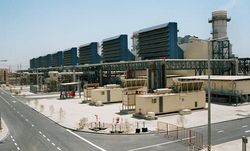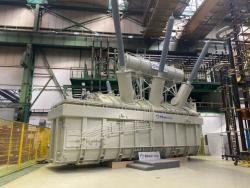
OR WAIT null SECS
© 2024 MJH Life Sciences™ and Turbomachinery Magazine. All rights reserved.
Four vital turbomachinery control valves
Turbomachinery Controls dedicated to centrifugal and axial compressors use several types of control valves, such as antisurge (recycle) valve, suction throttle valve, hot-gas bypass valve and quench control valve. As the final control element in its control loop, these control valves are vital to implementing good turbomachinery controls.
This article contains brief introductions excerpted from the paper, "Turbomachinery control valves sizing and selection", by Meghat Zaghloul of Compressor Controls Corporation.
The anti surge-control valve is the final control element for the antisurge control loop. When process conditions force the compressor (stage) to operate with low flow rates, and to ensure that the compressor always handles more flow than the surge value, the antisurge control valve is opened when necessary to allow the gas delivered by the compressor to either be recycled, or blown-off to the atmosphere. When the gas being compressed is recycled via a control valve, it may be called a spillback, kickback or recycle valve. When the gas being compressed is air or nitrogen, antisurge control is not usually done via recycling discharge gas back to the suction – as this would require a cooling system to remove the heat of compression – but rather by blowing off into the atmosphere. In these cases, the antisurge valve is commonly called a blow-off valve.
It is possible to control the throughput (loading) of an electric motor-driven single speed centrifugal compressor by means of throttling the suction.
In the event of an ESD scenario, the hot gas bypass valve provides an alternative path for the gas to recycle, thereby “killing” (dropping) the pressure rise of the compressor almost instantaneously, and thus preventing any potential surging, no matter how fast the compressor rotor is decelerating. In order to reduce the discharge volume that the hot gas bypass valve is handling, it must be located very close downstream of the compressor discharge flange and there must be an associated non-return (Check) valve just immediately of the hot gas take-off line.
In most refrigeration compressors, hot gas from the compressor discharge is used as the recycle gas. This is due to the fact that the discharge gas pressure of the compressor is usually just above the condensing temperature of the refrigerant gas, and thus it is necessary to utilize the immediate discharge gas, prior to any cooling, to ensure that two-phase flow is avoided. However, allowing this hot recycle gas to circulate into the compressor inlet, especially when heavy or full recycle is necessary, would result in the inlet temperature of the compressor very quickly exceeding the trip, or safe value. Thus it is necessary to cool the recycle gas after it passes through the antisurge valve. In many cases, the evaporative cooling effect of liquid quench is utilized. In this approach, an appropriate amount of liquid refrigerant is admitted at a sufficiently high pressure into a specially designed nozzle system, that ejects the liquid quench into the stream of hot recycle gas as multiple fine sprays.
The fine sprays of liquid immediately evaporate, and thereby cools the combined stream. Crucial in the design of an effective liquid quench system is the actual design of the spray nozzles. In a poorly designed system, the liquid quench will not be introduced into the hot recycle gas stream as multiple fine sprays, and therefore there will be a significantly reduced cooling effect. Also there will be the additional risk of sending excessive amounts of liquid (the un-evaporated quench) into the compressor suction drum, and thereby tripping the train on excessive liquid level in that drum. Care must be taken to ensure that the quench fluid remains in its liquid state all through the quench liquid system, from the source through the quench valve and up to the nozzles; which implies that the liquid quench pressures must remain above the medium’s vapor pressure throughout the quench system.



